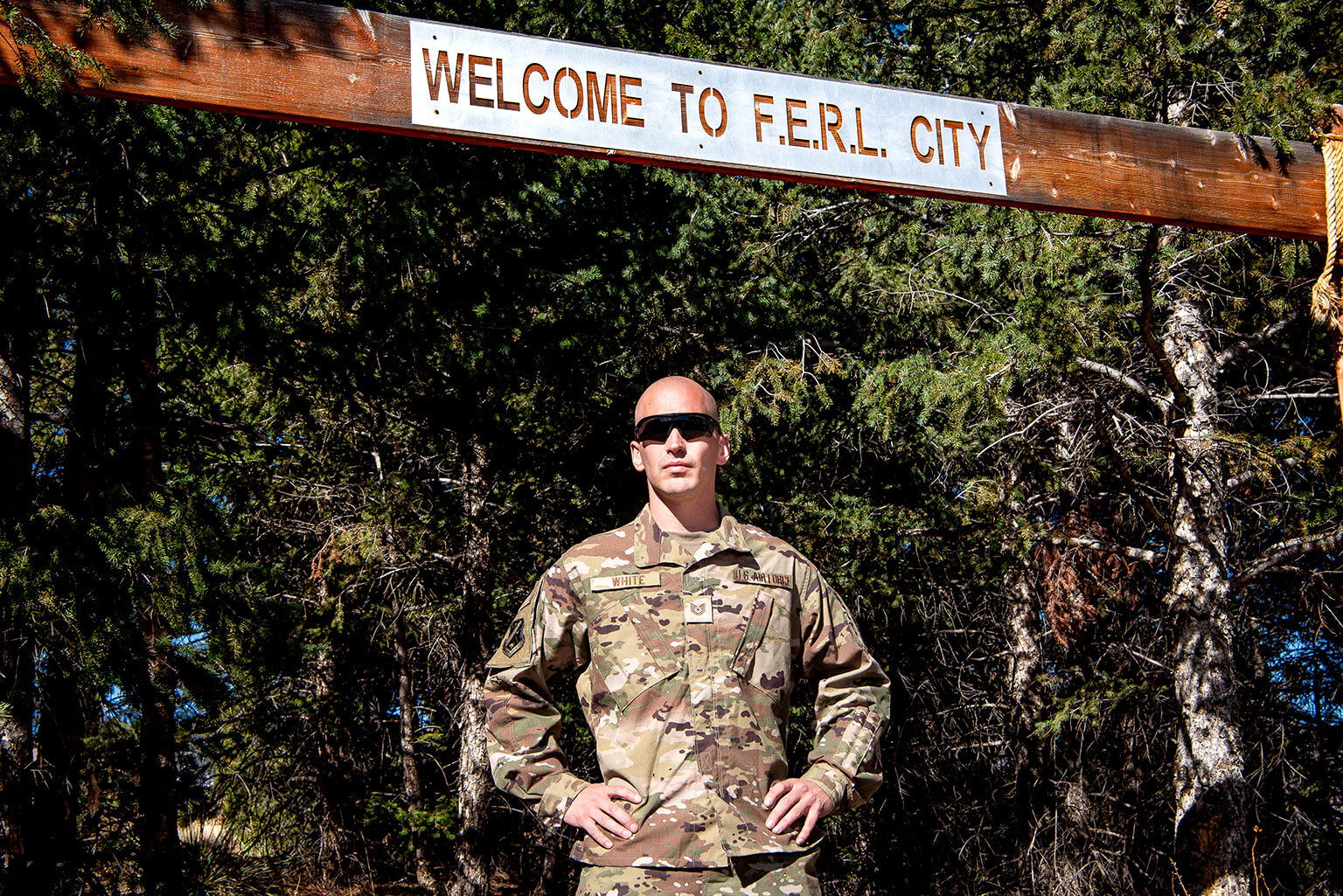Civil engineer instructor provides hands-on experience

Tech. Sgt. Jeremiah White, the Field Engineering and Readiness Laboratory superintendent, stands in front of the FERL entrance in Jacks Valley at the U.S. Air Force Academy, Colo. (U.S. Air Force photo by Justin Pacheco)
By Katherine Spessa
U.S. Air Force Academy Strategic Communications
U.S. AIR FORCE ACADEMY, Colo. – At the foot of Jacks Valley, the U.S. Air Force Academy’s 3,300-acre training complex, sits the practical component of the Civil and Environmental Engineering Department. Requisite tools of the trade are neatly aligned in readiness for cadets in the program to begin hands-on training.
Tech. Sgt. Jeremiah White oversees it all. He calls it “where the rubber meets the road.”
“It’s always great getting to roll up your sleeves, go dig in the dirt and make something out of nothing,” White said.
Experience and the enlisted perspective
White brings a wealth of knowledge and experience with four deployments, dozens of temporary duty assignments and seven years in the U.S. Air Force’s Rapid Engineer Deployable Heavy Operational Repair Squadron Engineer (RED HORSE). He’s been the Airman with the shovel and the NCO with the clipboard, a craft lead, planner and project manager.
He brings all of that to bear while training and mentoring dozens of cadets each year through the Field Engineering and Readiness Laboratory, individual cadet capstone projects and group community projects.
“He absolutely runs the show,” said Cadet 2nd Class Gabriel Hawthorne, a civil engineer major. “It’s so cool to see that they’ve brought someone in with his expertise, and we’re able to see what the enlisted men and women are capable of. They are extremely good at what they do.”
‘Building something from nothing’
White’s primary program is FERL, the Academy’s bridge between theory and application that helps cadets gain hands-on experience in surveying, construction methods and construction materials. Each summer, approximately 50 mentors in the civil engineering field come from around the U.S. to help cadets with their summer FERL project, building Navajo hogans, which they then donate to the Navajo Nation.
“They build two houses in a month,” White said. “That’s what I love about the CE career field: you get to point to something and say, ‘I built that.’ I love that cadets get to do that every year. I never see anything but a smile on their face.”
A group of cadets recently helped White build a retaining wall in Jacks Valley, a six-hour project that taught cadets several valuable skills.
“I learned a lot about leading by example,” said Hawthorne. “When we were down building that wall there wasn’t a second he wasn’t working on something while also teaching others how. He’s an awesome person to work side-by-side with. He brings energy and positivity.”
One-on-one mentorship
What White values most about working at the Academy is his ability to mentor cadets directly through individual cadet capstones or side projects that cadets volunteer to help him with.
“Sometimes cadets will come down, and we’ll work on something, and they’ll just talk to me about things that are going on in their lives,” White said. “Men aren’t always able to open up unless you’re working on something, but give them something to do, and they can get it off their chest.
“It’s good to have those mentorship moments.”